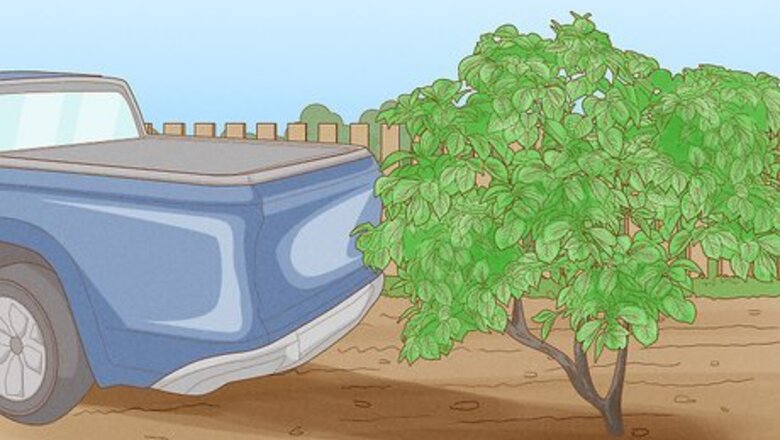
views
Using a Pickup Truck
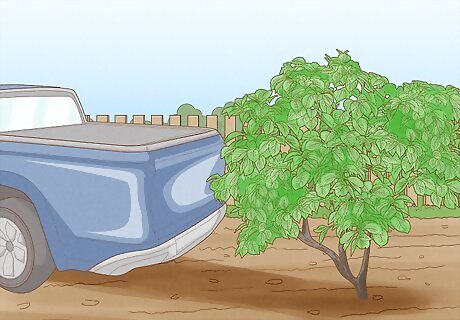
Back the truck up close to the bush. Get a friend who has a pickup truck if you don’t have one yourself. It shouldn’t matter how much horsepower the truck has, but you’ll need a towing hitch. Never attempt this with any vehicle smaller than a truck. If you don’t have a truck, you can rent one. You may not want to do this in case something goes wrong.
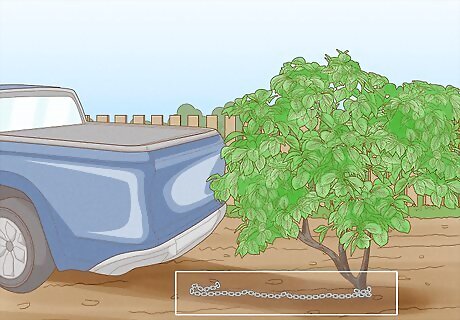
Wrap a towing chain around the bush. Towing chains are designed to pull cars, so they’re strong enough for bushes. Warp the chain around the bottom of the bush’s trunk as close to the ground as you can get it. Loop the end of the chain in on itself to hold it in place.
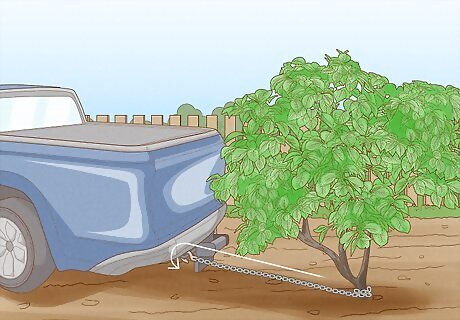
Hook the chain to the truck’s towing hitch. Keep the rest of the chain as low to the ground as possible while doing this. The chain must always be attached to the hitch rather than a weaker part of the truck such as the bumper.
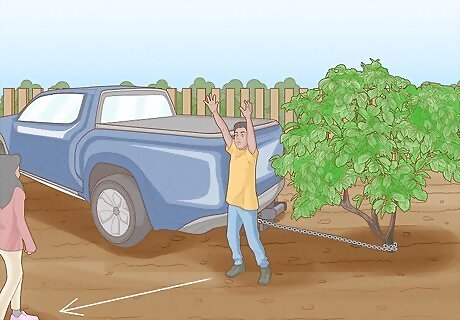
Move everyone away from the area. Take children and pets inside of the house. Ask any onlookers to stand back in case the chain snaps or something splinters. It’s for their own safety.
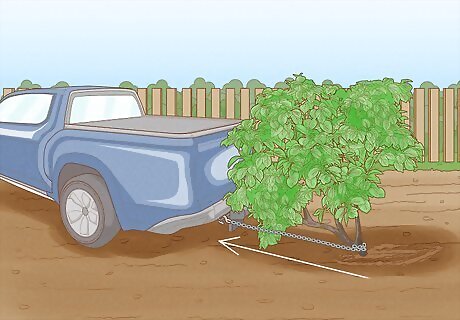
Slowly drive the truck forward. Press down lightly on the gas pedal and roll forward. Once the chain is off the ground and taut, stop moving. Doing this gives the bush a little tug, which may not remove it completely at first. Avoid stomping down on the gas pedal. While driving fast may seem like a good idea, this can cause the chain to break as well as damage the truck or the ground.
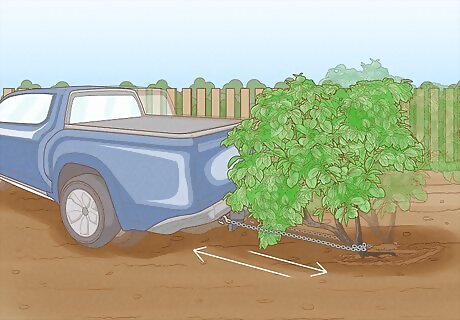
Back the truck up and drive forward again until the bush is removed. Back the truck up towards the bush so the chain slackens, then drive forward again to give the bush another tug. Repeat this until the bush comes out of the ground.
Digging out Bushes by Hand
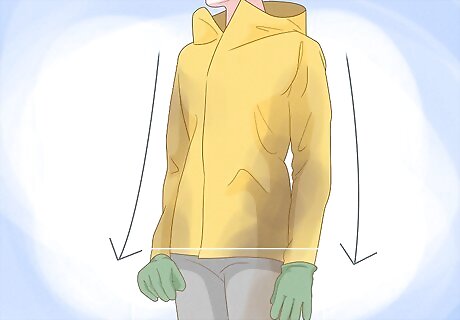
Put on gloves and long-sleeved clothing. Protect your skin before you begin the removal process. A long-sleeved shirt and long pants such as jeans protect you against scrapes. Slip a pair of gardening gloves over your hands as well.
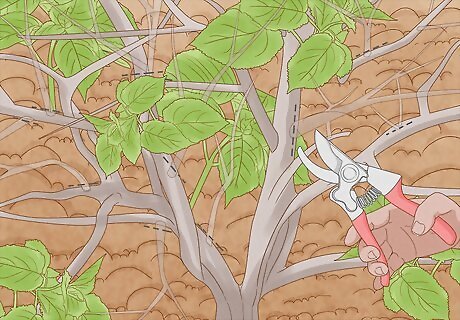
Trim away smaller branches with hedge clippers. Simply line up the branches between the clippers and shear them off. Work from the outside of the bush, slowly reducing the bush’s size. You usually do not need to remove all the outer branches since cutting the thicker branches in the center also gets rid of the smaller ones. Use bypass loppers instead to make this a quick and easy job. You may also use a reciprocating saw, pruning saw, or hand saw.
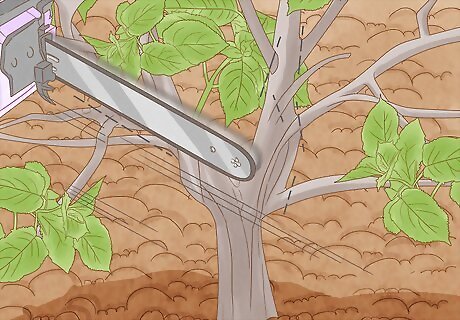
Saw thicker branches close to the trunk. Locate the branches in the center of the bush. Cut them as close to the trunk as possible. A chainsaw may also be used on large bushes. Put on safety gear, including a helmet, goggles, ear defenders, and a safety mitt. Avoid letting the chainsaw touch the ground.
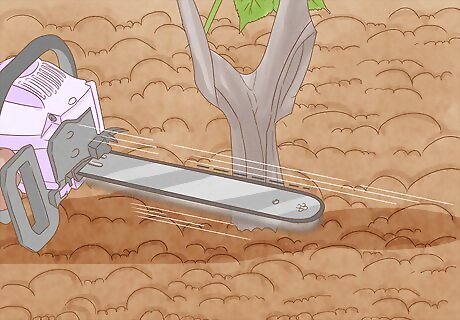
Cut the stump close to the ground with a saw. Hold the hand saw or pruning saw flat and gradually cut through the stump. Cut the trunk to remove any remaining branches in your way. The lower you can cut the trunk, the more weight you’ll eliminate from the remaining part of the bush. Don't use a chainsaw once you get close to the ground, since it could cause kickback. If you're not planning on removing the roots, you can stop here. Use a sander to grind down the stump and apply weed killer to kill the bush stump. Weed killer ensures that the stump can’t sprout and that diseases like mold don’t form.
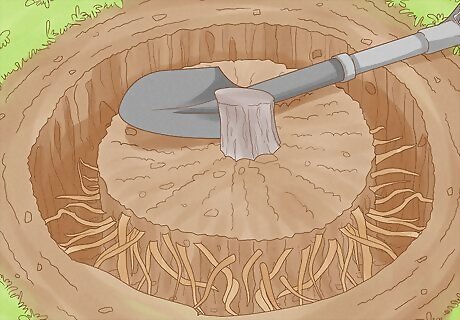
Dig a trench around the bush to expose its roots. A pointed garden shovel works well. Dig as close to the trunk as possible. Remove the dirt on all sides of the trunk until the roots are exposed.
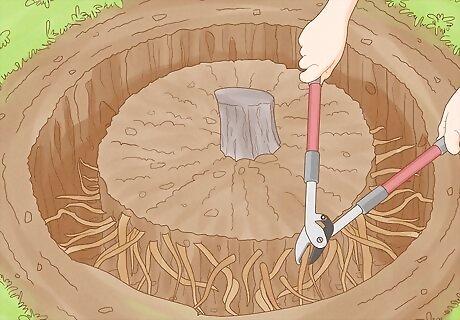
Sever the roots with a saw or loppers. A pruning saw or reciprocating saw cuts through most roots easily. You can also use a hand saw or a pair of loppers. If you don’t have one of these, a pointed shovel can also sever roots on smaller bushes. Cut all the roots you see. An axe or mattock are also viable options for chopping through the roots.
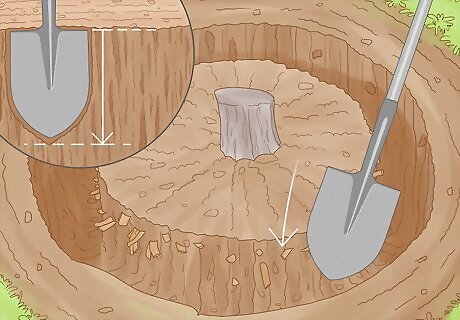
Dig down until you can fit a shovel’s blade under the stump. Continue digging straight down in one spot. You’ll see the bottom of the bush right below the soil. Slip your shovel underneath it.
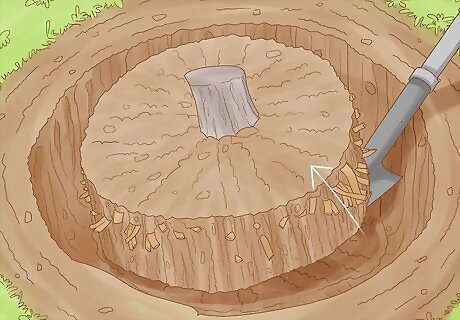
Lift the stump with a shovel. Push down on the shovel’s handle to raise the stump. Most likely it won’t come out at first because some of the roots are still attached. Continue digging and cutting roots to free the stump. It helps to have another person leverage the stump with the shovel while you pull upwards on the stump. You’ll have an easier time seeing and reaching the remaining roots.
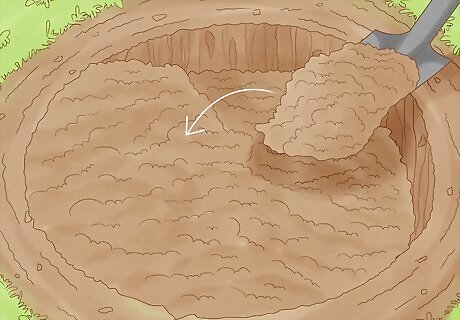
Shovel soil back into the hole. Clear away the branches and other plant material. Use your shovel to refill and smooth out the hole where the bush was.
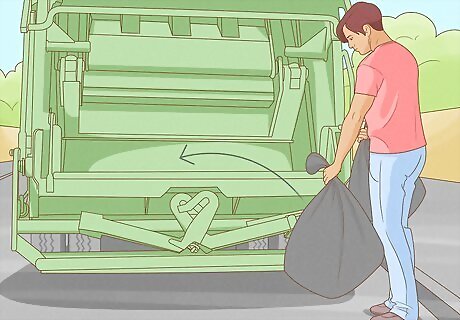
Recycle the bush parts. Some garbage collection services accept bundled branches and other plant material. Call them or check your service contract to find out. If they don’t, place the pieces in a yard waste bag and drive it to the nearest recycling center. Check your town’s website for rules on recycling as well as the locations of any nearby centers accepting organic yard waste. Otherwise, try composting it for your other plants.
Using a Jack

Cut away the branches of the tree with clippers. Start on the outside of the tree, removing the smaller branches. This can also be done with other tools, such as a saw.
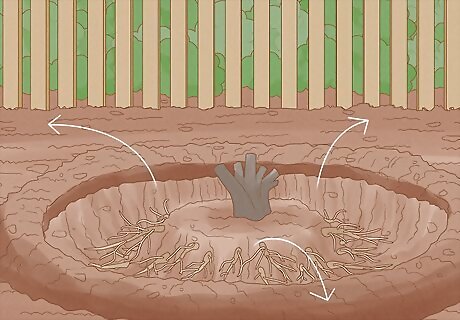
Shovel a trench around the bush. Use your pointed shovel or garden shovel to expose the bush’s roots. Dig all the way around the bush so the roots to expose the roots on all sides.
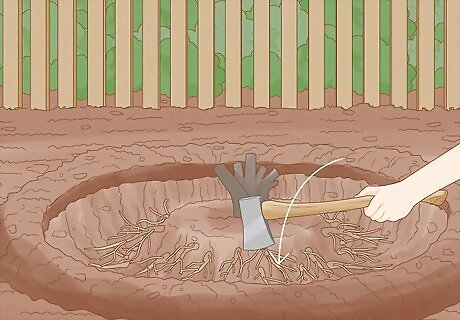
Cut the roots with an axe. Use an axe or mattock to sever the exposed roots. If you don’t have one, you may be able to do this with a pointed shovel or saw.
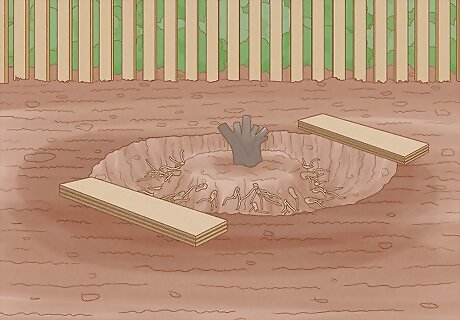
Place plywood boards on either side of the bush. Stack 2 or 3 flat boards on either side of the bush. The boards help give the jack more height to raise the bush.
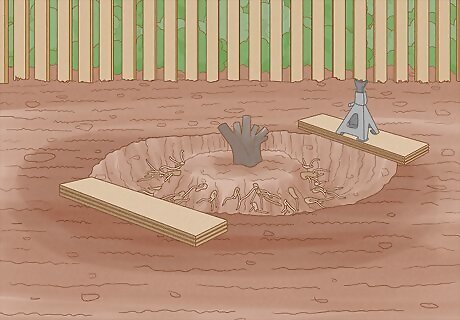
Set up a jack stand on one side of the bush. Jack stands can be found at auto parts stores. Set it on one of the plywood board stacks with the lifting arm facing upwards. If you don’t have a jack stand, stack 2 or 3 concrete blocks on top of the plywood instead.
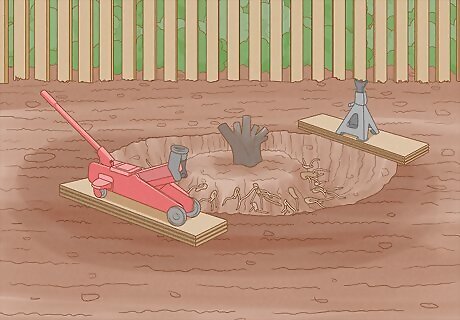
Place the jack on the other side of the bush. Lay the jack on top of the other plywood stack. Be sure to use a strong jack, such as long, flat hydraulic jack. This type of jack is better at bearing weight and should have a mechanical arm that you can crank while standing behind it. Scissor jacks, which often come packaged with cars, aren’t recommended. They’re a little more flimsy and only designed to lift your specific type of car.
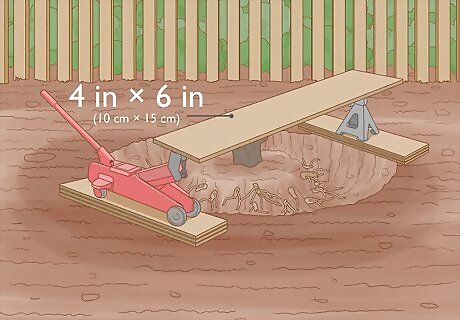
Place a wood beam over the jack and jack stand. A 4 in × 6 in (10 cm × 15 cm) beam is the standard size, although you may need a longer one for bigger bushes. Rest one end on the jack and the other end on the jack stand.
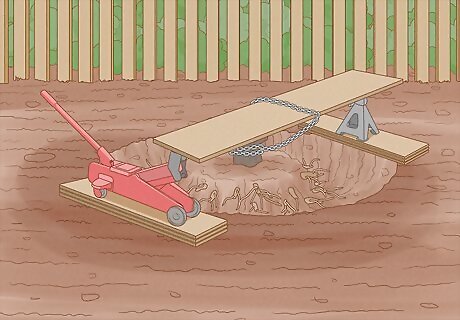
Tie the stump to the beam with a towing chain. Double-check the towing chain to make sure it isn’t damaged. If it is, get a new one at an auto parts store first. Tie one end of the chain around the beam, then run it down to the stump. Wrap it around the stump and loop the end in to tighten it.
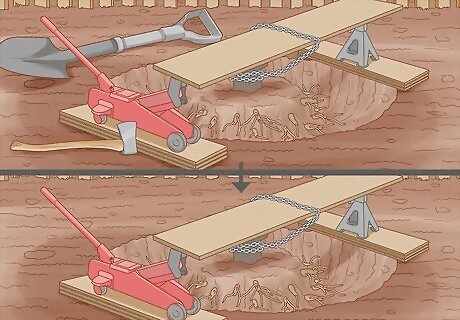
Put on safety goggles and clear the area. You will be putting lots of pressure on the beam and chain. Either one can recoil, so wear eye protection in case this happens. Have any children, pets, or onlookers stand far away or go inside.
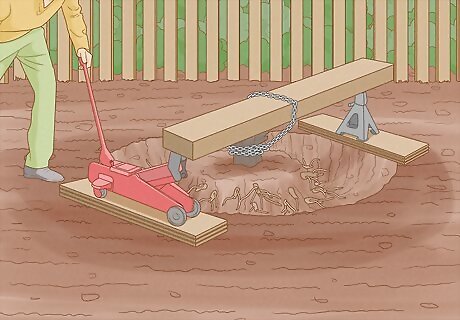
Crank the jack to raise it. Crank the mechanical arm on the jack. The arm will raise the beam, lifting the stump. If the stump doesn’t lift enough, lower the jack and place a few wood blocks on the jack’s arm underneath the beam.
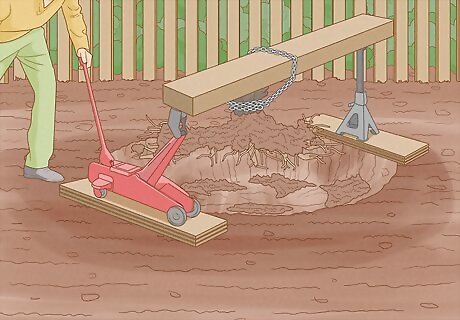
Saw off the exposed roots. Get the axe or other cutting implement you used before. Lower the jack as much as possible to ease tension on the chain, then sever the remaining roots. When you’re done, roll the stump out of the hole.

















Comments
0 comment